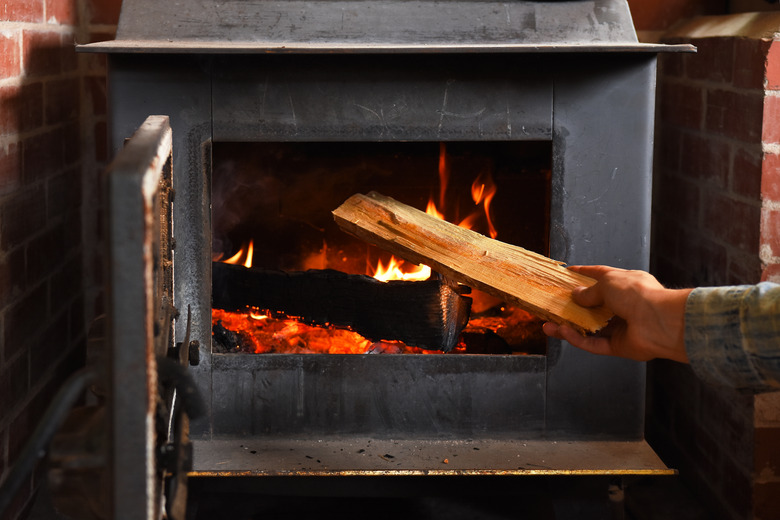How To Remove Wood-Burning Stoves
We may receive a commission on purchases made from links.
Wood-burning stoves are a lot of work. This work involves cleaning the wood stove, stacking and splitting, and chimney cleaning, not to mention getting the wood. Now it is time to end those chores because you've decided to remove or repurpose your wood-burning stove. Maybe you want to upgrade to a pellet-burning stove or go for a gas stove. Any way you look at it, you still have one final chore to do: remove the wood-burning stove. There is going to be a mess, and it is going to be heavy. So it's time to gather some friends and buy some pizza.
Get Set Up for Removal
Get Set Up for Removal
Trying to minimize the mess is where all well-organized projects begin. After letting the wood stove cool down, gather a few tarps and start cleaning out the interior of the wood-burning stove, including any fire brick. Removing the fire brick and other parts that can be removed will help lighten the load when the time comes for the heavy lifting. You will want something like a heavy-duty bucket to aid in carrying out the heavy brick. It is best to clean up with a broom and dustpan or maybe a vacuum specifically used for soot to keep the dust to a minimum.
Disconnect the Wood-Burning Stove
Disconnect the Wood-Burning Stove
The wood-burning stove is attached to a chimney, and that is going to be a mess. If you've ever cleaned your chimney, you know what this takes, but if you haven't, prepare yourself because it is going to get messy. To keep some of the mess from collecting on the soles of your shoes and spreading around the house, be sure to keep cleaning at all times. The pizza will have to wait.
With the tarps still down and the dust cleaned up, start to disconnect the chimney from the wood-burning stove. The chimney should be in sections. Try to remove it in manageable sections to minimize the mess. A plastic bag over the ends of the pipe helps. Cap the chimney to keep debris from falling into the home and to keep out the elements. This will also help keep the energy bill to a minimum. Finish cleaning up the surrounding area.
Remove the Wood-Burning Stove
Remove the Wood-Burning Stove
The time has come for the heavy lifters to put down the pizza and get to work. This is going to require a two- or four-wheeled appliance cart that is capable of handling around 300 to 800 pounds. For safety reasons, this is going to require a game plan. The plan needs to include who, how, what, when, and where the wood-burning stove is going to go. Heavy lifting starts in the planning.
Depending on which kind of appliance cart you have, carefully lift the wood-burning stove one corner at a time to manipulate it onto the cart. With a two-wheeled cart, it will be easier to manipulate it onto the cart, but it's not always the safest while going to the planned exit. Some two-wheeled appliance carts (hand trucks) are great if you have stairs.
Strap the wood stove to the cart. Either cart will require a good strap. Some good appliance dollies have them built into the cart for this purpose. Execute the removal plan and safely remove the wood-burning stove.
Dispose of the Wood-Burning Stove
Dispose of the Wood-Burning Stove
What are you going to do with the stove? One great way to get rid of it is to let it finance its replacement. Many others may enjoy the chores of owning a wood-burning stove and may even give you good money for it, so why not put that wood-burning stove up for sale? The ad could even read "free — just take it away from where it sits." That ad might save you $500 or more in having someone else remove it. Just be certain that you don't have an antique on your hands before you give it away. You never know.
Another way to help it finance the pizza at least is to take it to a metal recycling center. While you're at it, look around your property and grab a few other metal items that may put some extra pennies in your pocket. Make sure to include all the chimney parts and pieces.
While driving around town, you may see a person who has a trailer full of metal junk all the time. You might want to grab their phone number and give them a call when you have the wood-burning stove out of your house or maybe before. These people are everywhere and will gladly pick it up to recycle it for you free of charge, especially if it is easy pickings. Either way, it needs to be properly repurposed or disposed of.
